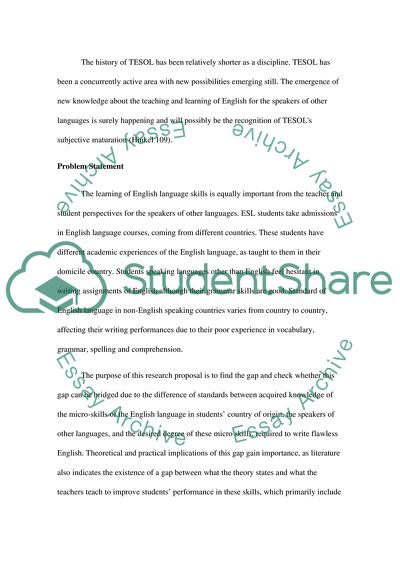Cite this document
(Teaching English to Speakers of Other Languages - Spelling, Research Proposal Example | Topics and Well Written Essays - 3750 words, n.d.)
Teaching English to Speakers of Other Languages - Spelling, Research Proposal Example | Topics and Well Written Essays - 3750 words. https://studentshare.org/education/1836491-teaching-english-to-speakers-of-other-languages
Teaching English to Speakers of Other Languages - Spelling, Research Proposal Example | Topics and Well Written Essays - 3750 words. https://studentshare.org/education/1836491-teaching-english-to-speakers-of-other-languages
(Teaching English to Speakers of Other Languages - Spelling, Research Proposal Example | Topics and Well Written Essays - 3750 Words)
Teaching English to Speakers of Other Languages - Spelling, Research Proposal Example | Topics and Well Written Essays - 3750 Words. https://studentshare.org/education/1836491-teaching-english-to-speakers-of-other-languages.
Teaching English to Speakers of Other Languages - Spelling, Research Proposal Example | Topics and Well Written Essays - 3750 Words. https://studentshare.org/education/1836491-teaching-english-to-speakers-of-other-languages.
“Teaching English to Speakers of Other Languages - Spelling, Research Proposal Example | Topics and Well Written Essays - 3750 Words”. https://studentshare.org/education/1836491-teaching-english-to-speakers-of-other-languages.


